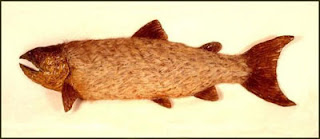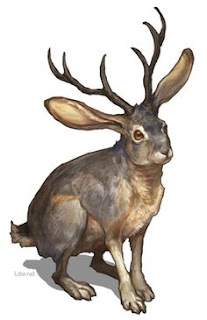eference :
1.
(The Cardiff Giant, t.t)
2.
(Kasai Rex, t.t)
3.
(Fur-Bearing Trout, t.t)
4.
(Jackalope, t.t)
5.
(The Cryptid Zoo: Air Rods, t.t)
6.
(The Ningen: Myth, Monster or Make Believe?, t.t)
7.
(The Ogopogo: A Lake Cryptid You’ve Probably Never
Heard Of, t.t)
8.
(Bukit Timah Monkey Man, t.t)
9.
(The Elusive Bunyip: Australia’s Chameleon Cryptid,
t.t)
10.
(The Cryptid Zoo: Mapinguary, t.t)
11.
(The Cryptid Zoo: Orang-pendek, t.t)
12.
(Phaya Naga, t.t)
13.
(Kongamato Pterodactyl, t.t)
14.
(Giant Anaconda , t.t)
15.
(In search of Australia’s monster reptiles, t.t)
16.
(Mokele-Mbembe: The Search for a Living Dinosaur,
t.t)
17.
(The Cryptid Zoo: Mermaids and Mermen in
Cryptozoology: Modern Sightings and Reports, t.t)
References
(n.d.). Retrieved
from The Cardiff Giant: http://hoaxes.org/archive/permalink/the_cardiff_giant
(n.d.). Retrieved
from Fur-Bearing Trout: http://hoaxes.org/animals/comments/furbearing_trout
(n.d.). Retrieved
from Jackalope: http://hoaxes.org/animals/comments/jackalope
(n.d.). Retrieved
from The Cryptid Zoo: Air Rods: http://www.newanimal.org/air-rods.htm
(n.d.). Retrieved
from The Ningen: Myth, Monster or Make Believe?:
http://mysteriousuniverse.org/2011/08/the-ningen-myth-monster-or-make-believe/
(n.d.). Retrieved
from The Ogopogo: A Lake Cryptid You’ve Probably Never Heard Of:
http://monstrumathenaeum.org/the-ogopogo-a-lake-cryptid-youve-probably-never-heard-of/
(n.d.). Retrieved
from Bukit Timah Monkey Man:
https://en.wikipedia.org/wiki/Bukit_Timah_Monkey_Man
(n.d.). Retrieved
from The Elusive Bunyip: Australia’s Chameleon Cryptid:
http://mysteriousuniverse.org/2013/01/the-elusive-bunyip-australias-chameleon-cryptid/
(n.d.). Retrieved
from The Cryptid Zoo: Mapinguary: http://www.newanimal.org/mapinguary.htm
(n.d.). Retrieved
from The Cryptid Zoo: Orang-pendek: http://www.newanimal.org/orang.htm
(n.d.). Retrieved
from Phaya Naga: https://en.wikipedia.org/wiki/Phaya_Naga
(n.d.). Retrieved
from Kongamato Pterodactyl: http://www.kongamato-pterodactyl.com/
(n.d.). Retrieved
from Giant Anaconda : http://www.trueauthority.com/cryptozoology/anaconda.htm
(n.d.). Retrieved
from In search of Australia’s monster reptiles:
http://weirdaustralia.com/2014/03/16/in-search-of-australias-monster-reptiles/
(n.d.). Retrieved
from Mokele-Mbembe: The Search for a Living Dinosaur:
http://www.livescience.com/38871-mokele-mbembe.html
(n.d.). Retrieved
from The Cryptid Zoo: Mermaids and Mermen in Cryptozoology: Modern Sightings
and Reports: http://www.newanimal.org/merfolk.htm
Kasai Rex. (n.d.).
Retrieved from
http://www.unexplained-mysteries.com/forum/index.php?showtopic=145176

































